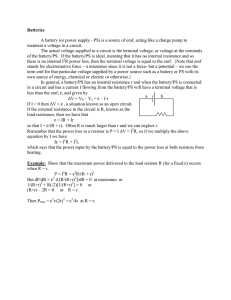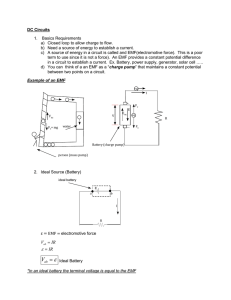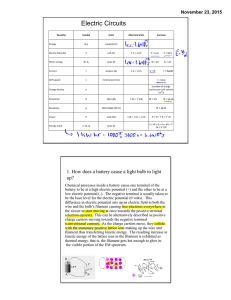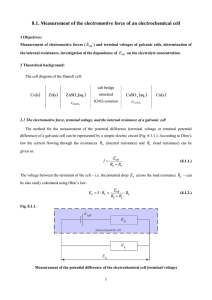28.1 Electromotive Force A constant current can be maintained in a
advertisement
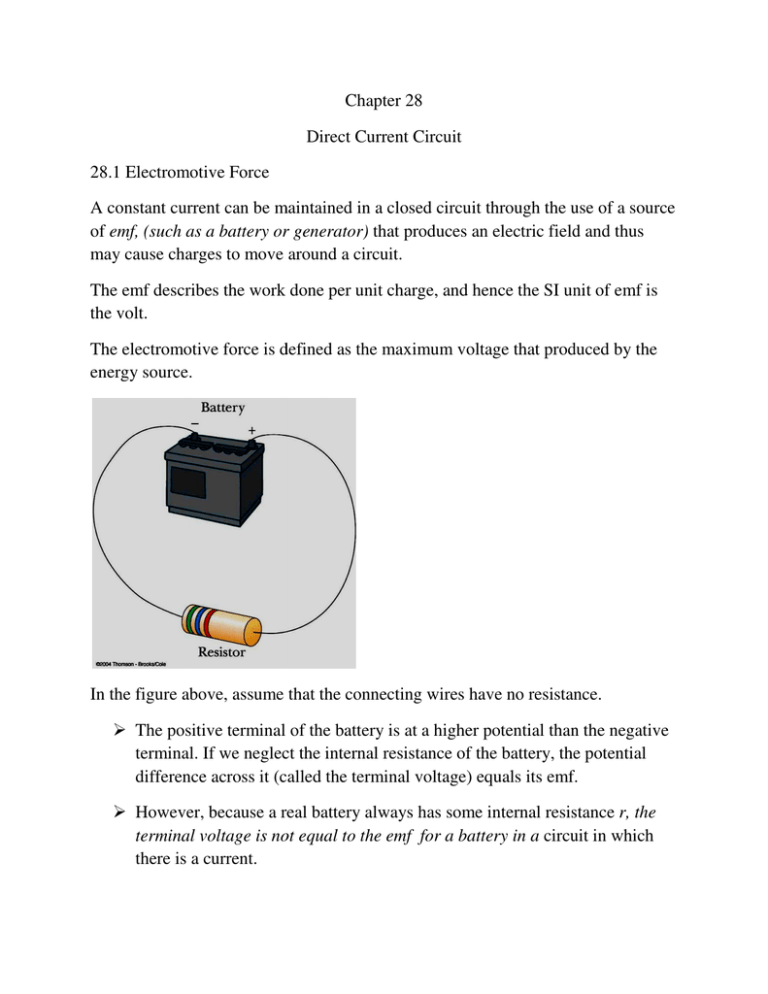
Chapter 28 Direct Current Circuit 28.1 Electromotive Force A constant current can be maintained in a closed circuit through the use of a source of emf, (such as a battery or generator) that produces an electric field and thus may cause charges to move around a circuit. The emf describes the work done per unit charge, and hence the SI unit of emf is the volt. The electromotive force is defined as the maximum voltage that produced by the energy source. In the figure above, assume that the connecting wir wires es have no resistance. The positive terminal of the battery is at a higher potential than the negative terminal. If we neglect the internal resistance of the battery, the potential difference across it (called the terminal voltage) equals its emf. However,, because a real battery always has some internal resistance r, the terminal voltage is not equal to the emf for a battery in a circuit in which there is a current. In the figure in front, As we pass from the negative terminal to the positive terminal, the potential increases by an amount ε. As we move through the resistance r, the potential decreases by an amount Ir, where I is the current in the circuit. ∆V=ε-IR (28-1) ε: is equivalent to the open-circuit circuit voltage—that is, the terminal voltage when the current is zero. The emf is the voltage labeled on a battery,… . The terminal voltage V must equal the potential difference across the external resistance R, often called the load resistance. The resistor represents a load on the battery because the battery must supply energy to operate the device. The potential difference across the load resistance is ∆V = IR ε = IR + Ir = I ( R + r ) I= ε (R + r) (28-2) (28-3) The total power output Iε of the battery is delivered to the external load resistance in the amount I 2R and to the internal resistance in the amount I 2r. Iε = I 2 R + I 2 r Example 28-1

